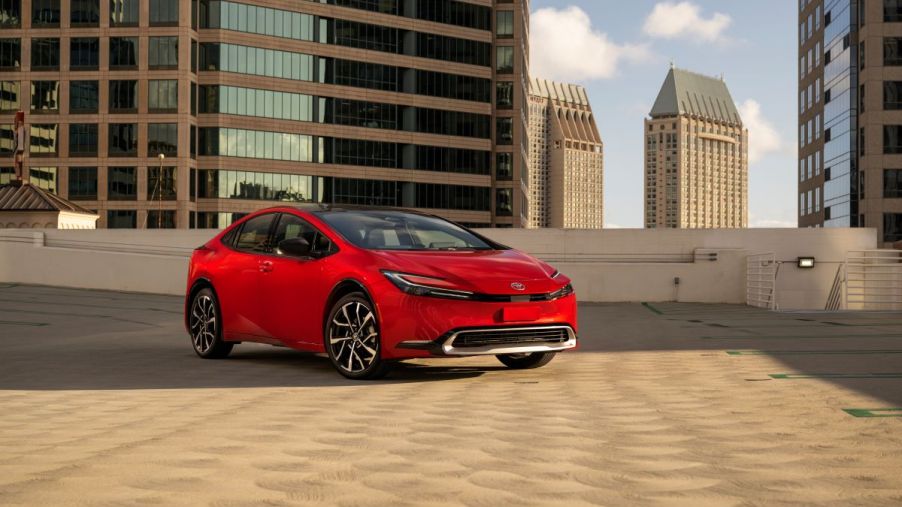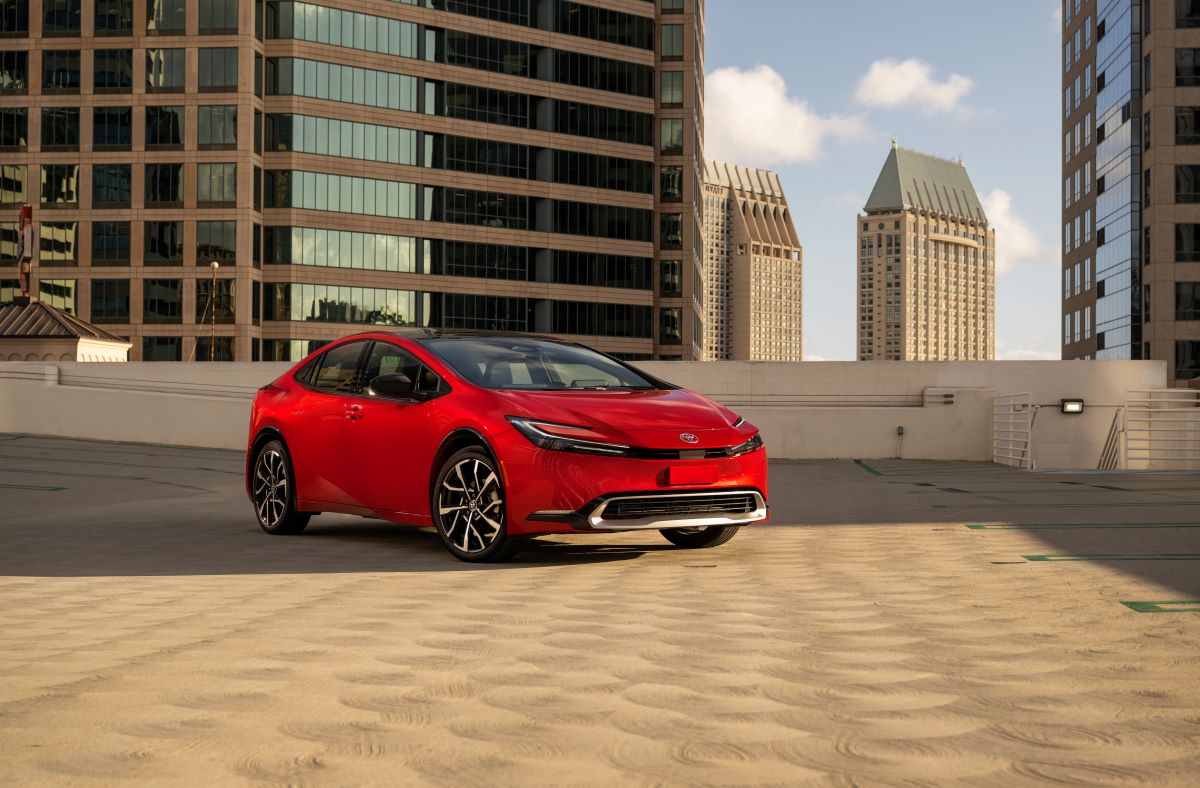
4 Modern Conveniences You Can’t Miss in the 2023 Toyota Prius Prime
The all-new Prius Prime is the college tech geek that finally landed a six-figure salary in Silicon Valley. Gone are the unwelcome eccentricities of the old Prime, including the annoyingly complicated tablet-style infotainment center stack and the gopping front fascia. Those were just some that sought to mask the Prime’s overwhelming dullness. Fortunately, there’s next to nothing to complain about in the 2023 Toyota Prius Prime.
Toyota’s effort is front and center for the complete Prius redesign and its PHEV (plug-in hybrid electric vehicle) sibling. But beneath the elegantly athletic exterior lines is far more innovation to make driving easier and more enjoyable. Up to 44 miles of all-electric is a convenience, but the following four are much more noteworthy.
1. Toyota’s Traffic Jam Assist (TJA)
The new Prime comes standard with the Toyota Safety Sense (TSS) 3.0 suite, which includes a measure to ease stop-and-go driving. In low-speed conditions—up to 25 mph—the Prime will take over the driving controls. Toyota says the radar-based TJA operates the acceleration, braking, and steering in certain conditions. Unfortunately, the impressive safety system has capability on limited roadways and isn’t applicable nationwide.
2. Standard low-speed co-pilot
Whereas the Prime’s TJA is a safety-minded system, Toyota’s Proactive Driving Assist (PDA) is more convenience-minded. The system will also help operate the acceleration, braking, and steering in certain low-speed conditions. Toyota says PDA will “help to support driving tasks such as distance control between a preceding vehicle, pedestrian or bicyclist.”
3. Electricity-producing brakes
The 2023 Toyota Prius Prime has a clever braking system to assist fuel efficiency. An electronic system will manage the operation of the regenerative braking force in the Prime’s electric motors and the hydraulic braking system to provide stopping power. The duo of electric motors will recover as much charge as possible when the car slows down. Oftentimes, these systems can cause brake pedal feedback to feel erratic. But the Prime has an active hydraulic booster to improve pedal feel.
4. Cloud connectivity
New for the Prime sedan this year is access to a wide range of over-the-air updates. It’s only available with the XSE and XSE Premium’s 12.3-inch infotainment system, but the upgrade is a welcome addition. Drivers will have the most up-to-date search capabilities provided by Google’s Points-of-Interest data. Navigating by the Cloud also means Prime drivers can use the latest map, traffic, and routing information to their advantage.
How much is the 2023 Toyota Prius Prime?

Although the all-new model is predictably more than the preceding 2022 Prius Prime, the innovations and upgrades make up for the roughly $5,000 difference. A base Prime SE will set potential buyers back $32,350, and the mid-range XSE will fetch $35,600. For the top-of-the-line XSE Premium, MSRP begins at $39,170, Toyota says. But that doesn’t include the $1,095 destination fee.
Another nifty modern convenience is available on the XSE Premium. For an extra $610, Toyota will throw in a 185-watt solar charging roof. It may not boost the PHEV’s already-quick 6.6-second 0 to 60 mph time, but it will power anything you can plug into the Prime.


